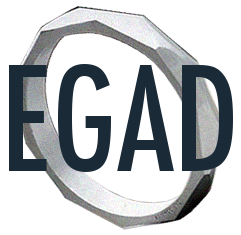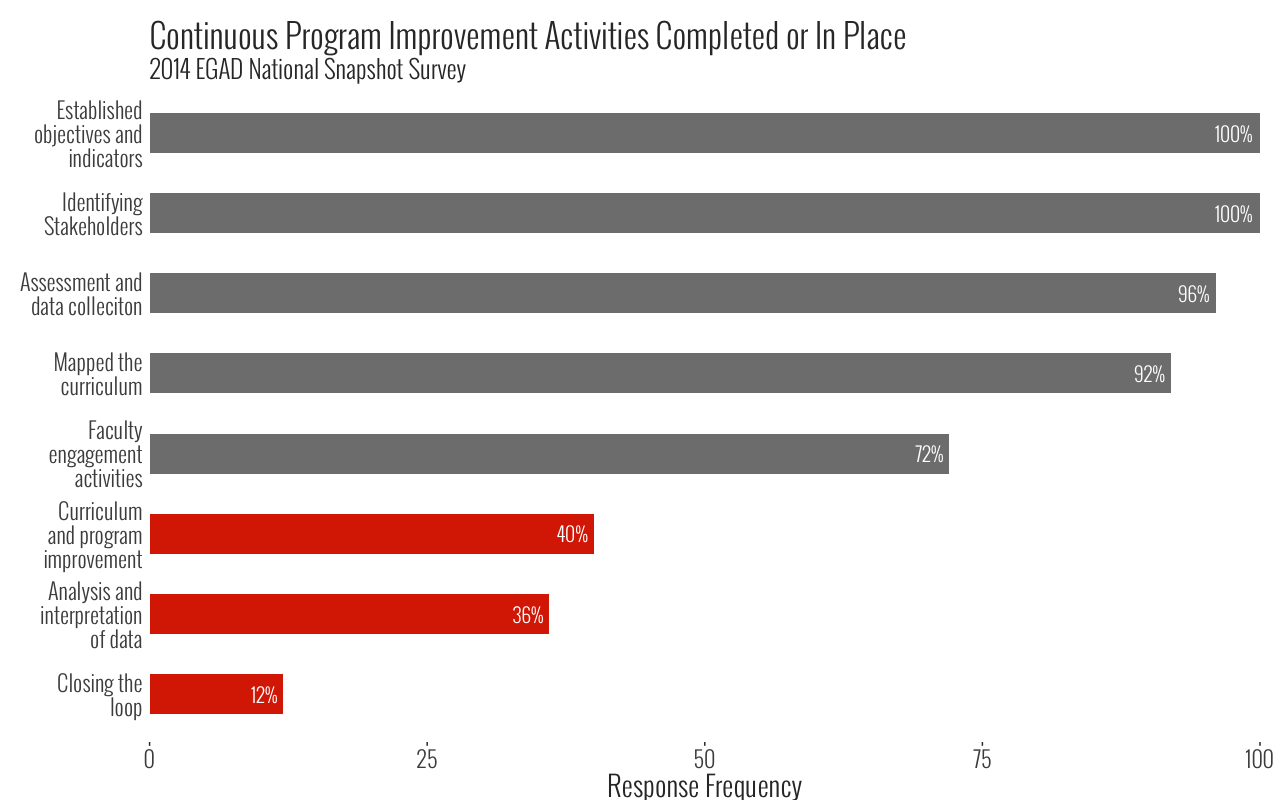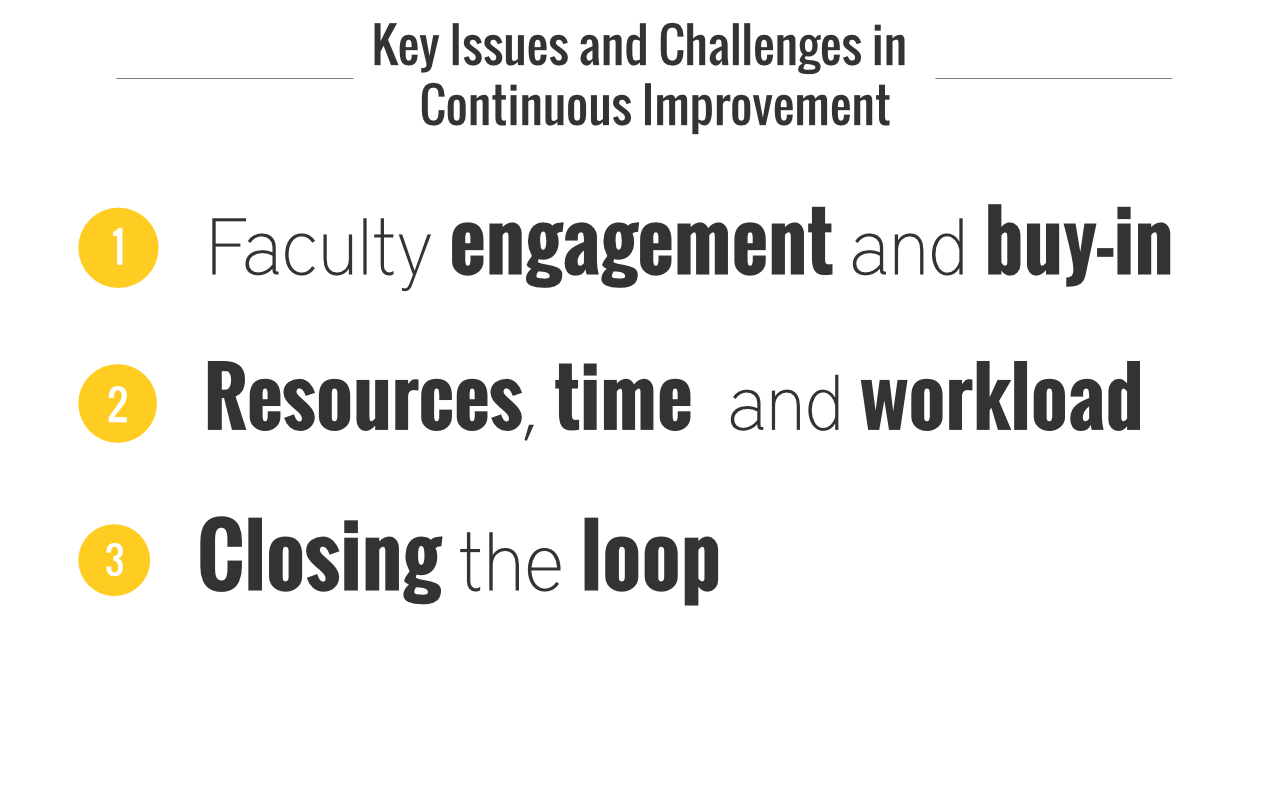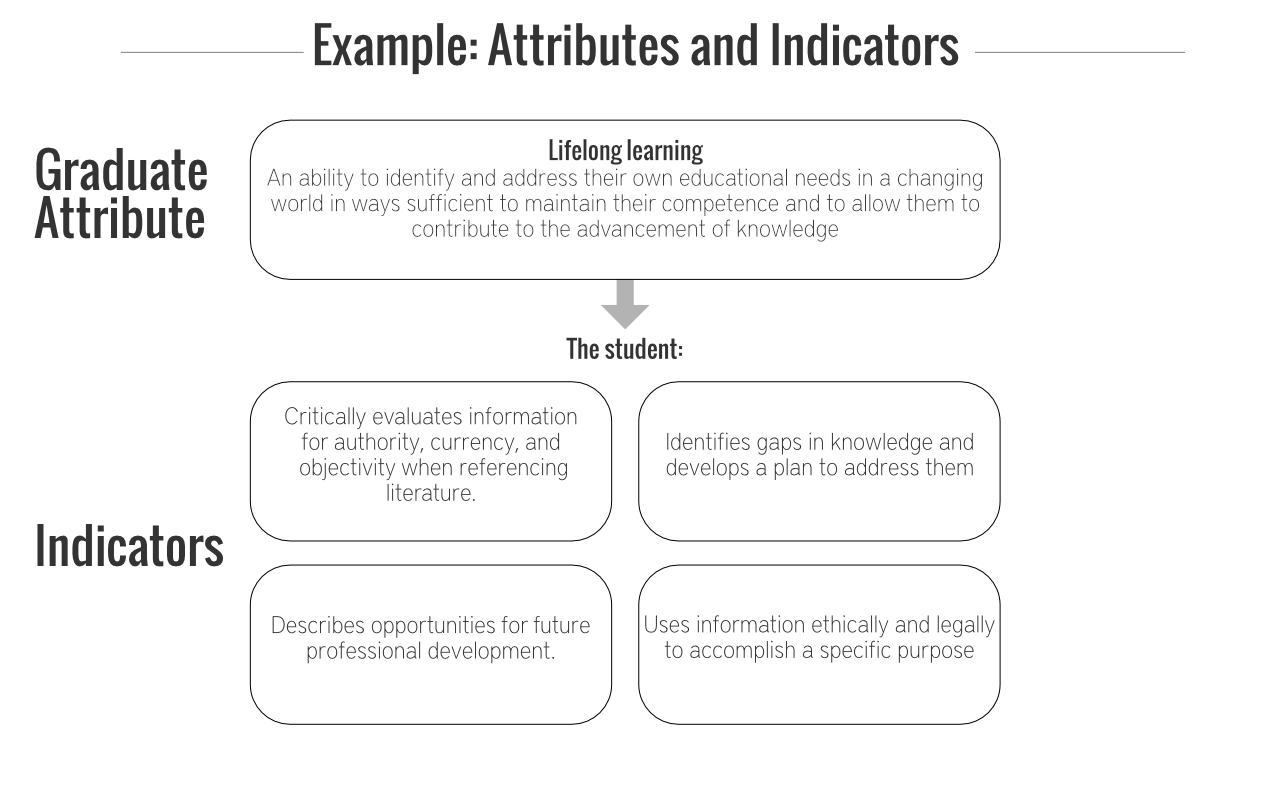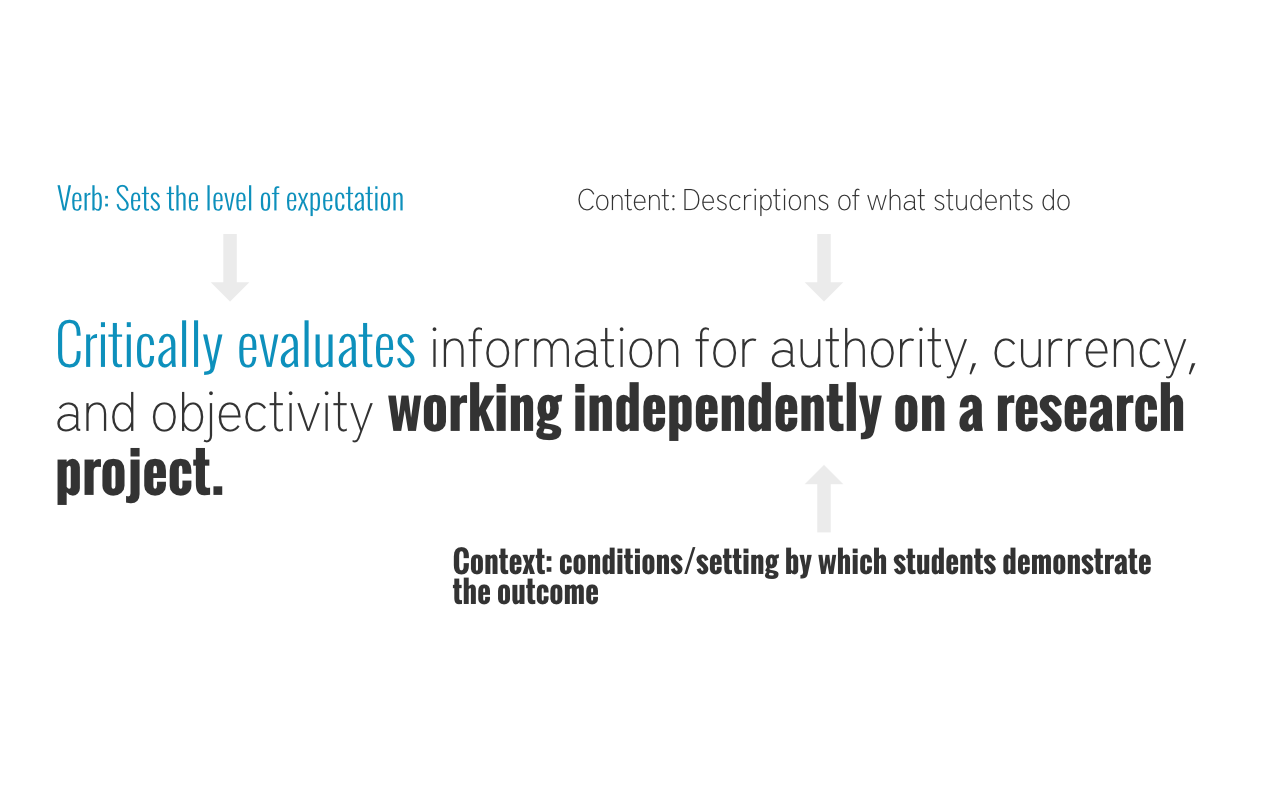
Getting Started
The thought of undertaking a comprehensive program review can be daunting. An effective and constructive way of easing into the process is to examine the foundations of the program(s) you offer and the characteristics of the students you serve. Doing so enables you to, not only demonstrate the ways your programming supports the development of the 12 CEAB-identified attributes, but also highlight any unique attributes that your program supports. This process also makes it easier to describe the characteristic behaviours (indicators) you expect students to demonstrate in the context of your programs.
Thus it can be useful to begin with a general discussion of what the present status of your engineering programs are with respect to continuous program improvement processes, and what, in broad terms, are the key issues and questions are at your institution.
Establishing Your Unique Program Parameters
The aim of all engineering programs in Canada now is to support students’ development of the 12 Engineering Graduate Attributes, Because the requisite attributes have been provided as identified outcomes, we know what students must be able to do when they leave our programs.
But the raw material we have to work with necessarily influences programming decisions, and each student body has its own unique characteristics. Getting a handle on who your students are might help you better define the specific ways your program supports their development. Take some time to consider the question:
What does a typical entry-level student to your program look like?
Now, using the information you’ve just generated, consider the ways your program has been tailored to support the types of students who typically choose to enter it:
What do you do?
For whom?
For what benefit?
Your answers to these questions will help you to clarify and articulate the purpose of your program.
Defining the Purpose of Your Program
Using your answers from the previous section, you are now ready to prepare a Program Statement. Remember, the purpose of a program must:
be student focused
help students achieve outcomes and is therefore driven by their needs
aligned with larger goals
be aligned with that of the Faculty or School which in turn is aligned with that of the institution
The statement of purpose should be specific enough to outline what it is you do, and provide a touchstone against to align content and instructional and assessment methods of courses in the program. The following examples will help you to get started:
The purpose of the Civil Engineering program is to provide a focused problem-based, education in areas of Structural, Geotechnical, Hydro-technical and Environmental Engineering to academically elite undergraduates to support ethical and economically and environmentally sustainable practices.
The purpose of our program is to provide a high quality and broad engineering education, to conduct strong basic and applied research and to serve the industry, the profession and the community at large through innovative solutions, dissemination of knowledge and advancement of science and technology.
Defining Indicators for Your Program
All engineering schools in Canada are now required to evaluate their programs’ success relative to their ability to support students’ development of 12 Requisite CEAB defined Graduate Attributes.
These Engineering Graduate Attributes are general characteristics that CEAB has defined as essential for all graduates of Canadian engineering programs.
Let’s review the connections between Graduate Attributes, Indicators, and Course Learning Outcomes.
Your program review team will be developing Indicators for each of the Graduate Attributes.
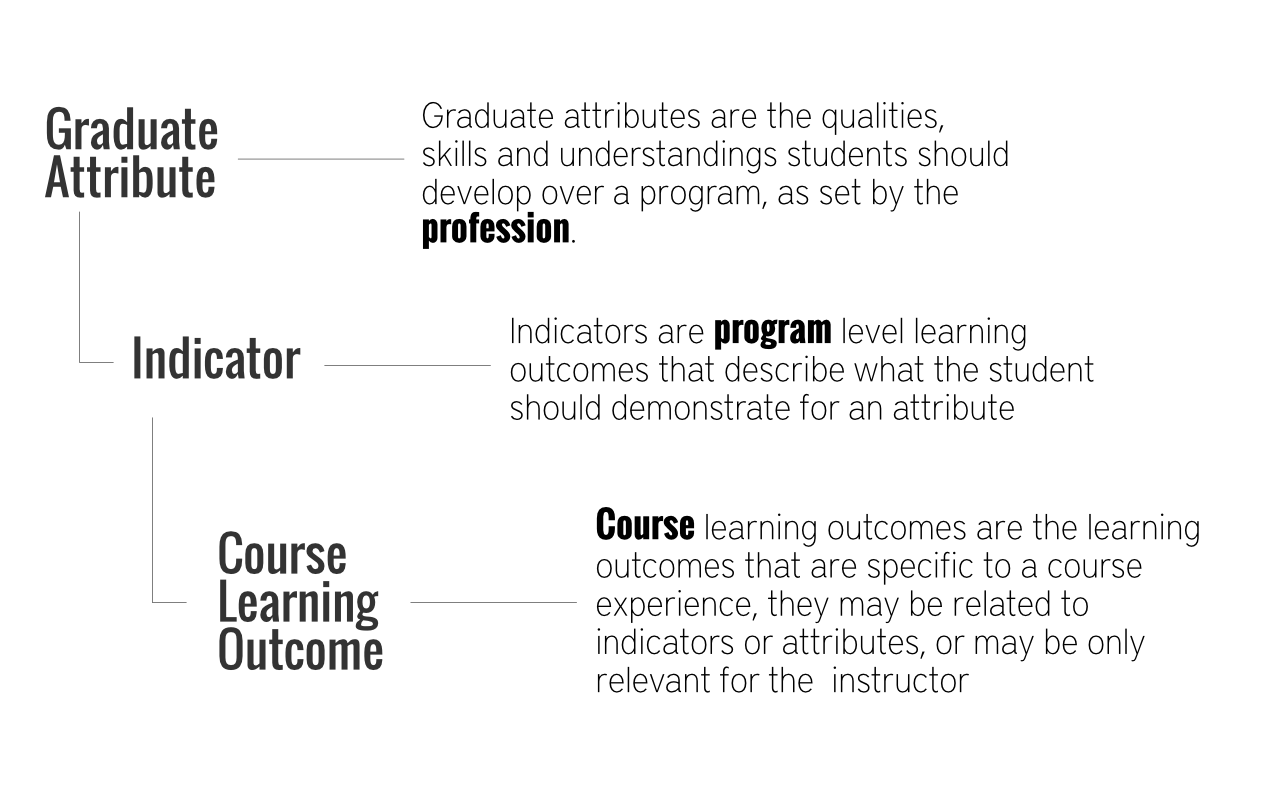
Well-constructed indicators should:
Be meaningful and measurable
It should mean something to students and to programs, and be able to be directly measured
Have content, context and a verb
This answers the ‘what, when, why and how come?’
Be focused on what the student DOES
Should be phrased to describe demonstration or performance of a skill or ability
Be useful to YOU in articulating key expectations to students
These will form the basis for the expectations of program, and what they expect their students to be able to do upon graduation.
What follows is an example from our EGAD Project files. This approach articulates the expectation for each year of the program for each indicator. In some cases, the expectation is repeated in some years indicating that the years share similar expectations.
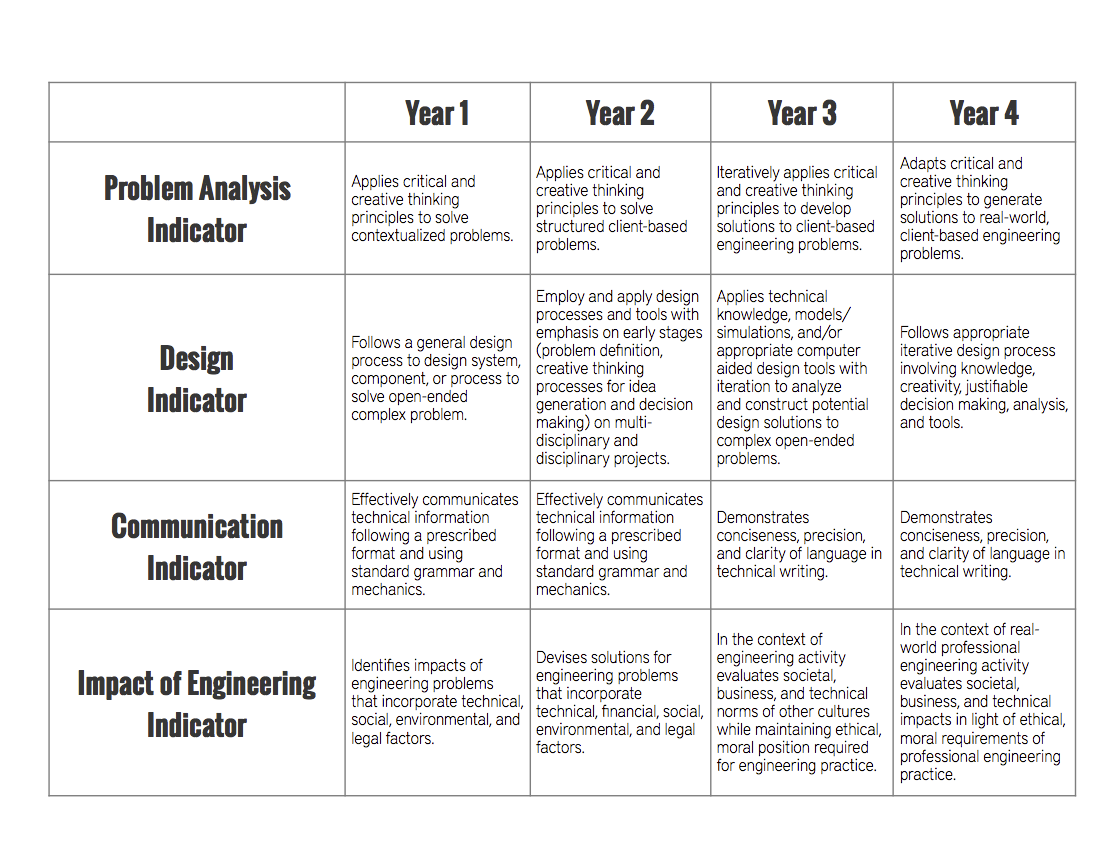
Meeting CEAB Accreditation Reporting Requirements
While you are developing your Indicators, the CEAB Reporting Requirements will be relevant in terms of how you build your documentation processes and how you will ultimately structure your approach. The complete Accreditation Questionnaire for your specific accreditation cycle outlines how CEAB expects this information to be presented. The questionnaire includes Word and Excel templates indicating how the data is to be presented. The indicators themselves are used specifically in Table 3.1.2 (shown below), and depending upon your assessment approach may also be used in the Course Information Sheets (CIS).
 This brings us to Step 2…
This brings us to Step 2… 